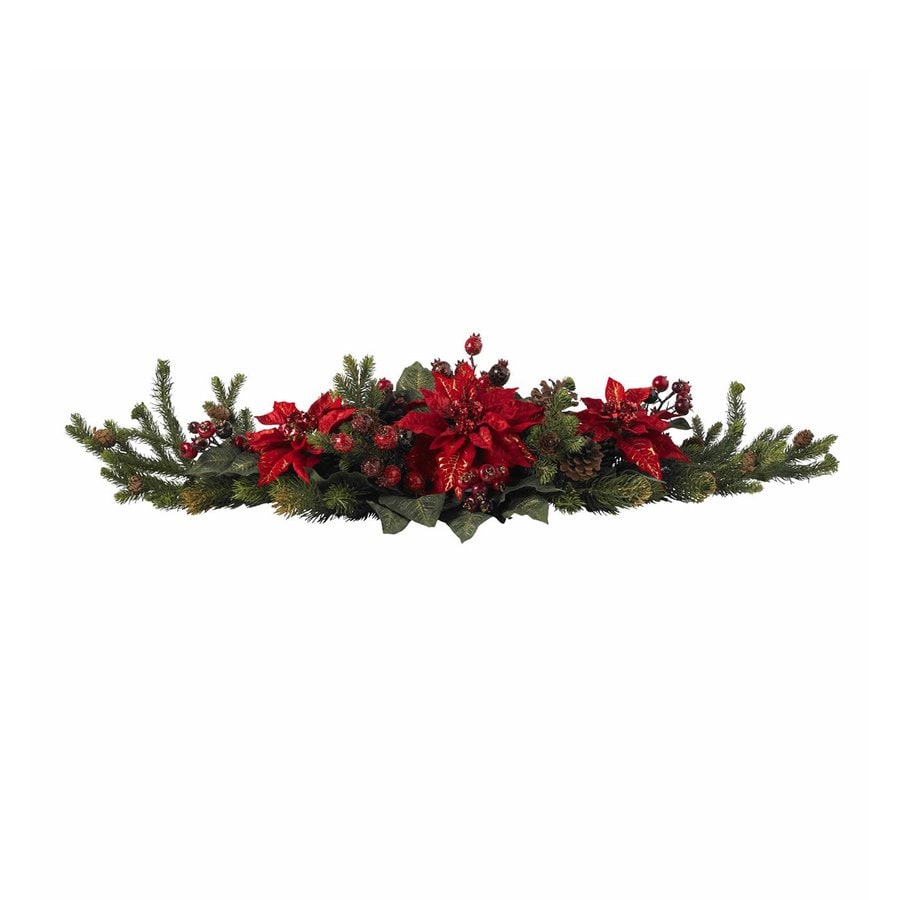The poinsettia (/p??n's?ti?/p or /??n's?t?/) (Euphorbia pulcherrima) is a commercially important place species of the diverse spurge family. The varieties is indigenous to Mexico. It is particularly well known because of its green and red foliage which is trusted in Xmas floral exhibits. It derives its common English name from Joel Roberts Poinsett,[3] the first USA Minister to Mexico,[4] who introduced the plant to the US in 1825.
Euphorbia pulcherrima is a shrub or small tree, typically attaining a elevation of 0.6-4 metres (2 ft 0 in-13 ft 1 in). The flower bears dark renewable dentate leaves that solution 7-16 centimetres (2.8-6.3 in) long. The shaded bracts--which are most flaming red but can be orange often, pale green, cream, green, white, or marbled--are often recognised incorrectly as flower petals because of their groupings and colors, but are leaves actually.[citation needed] The colors of the bracts are created through photoperiodism, and therefore they require darkness (12 hours at the same time for at least five days in a row) to change color. At the same time, the plant life require numerous light during the full day for the brightest color. The flowers of the poinsettia are unassuming and do not attract pollinators. They are simply grouped within small yellowish structures within the center of each leaf number, and are called cyathia. The poinsettia is local to Mexico. It really is within the outdoors in deciduous tropical forests at modest elevations from southern Sinaloa down the entire Pacific coast of Mexico to Chiapas and Guatemala. Additionally it is found in the inside in the hot, dry forests of Guerrero seasonally, Oaxaca, and Chiapas. Information of E. pulcherrima growing in the open in Costa and Nicaragua Rica have yet to be established by botanists. There are over 100 cultivated varieties of poinsettia.
The Aztecs used the plant to produce red dye and as an antipyretic medication. In Nahuatl, the language of the Aztecs, the plant is called Cuitlaxochitl, meaning "flower that grows in residues or soil" Today it is known in Mexico and Guatemala as Flor de Noche Buena, meaning Christmas Eve Flower. In Spain it is known as Flor de Pascua or Pascua, indicating Easter flower. In Chile and Peru, the flower became known as Crown of the Andes. In Turkey, it is named Atat?rk's blossom because Atat?rk, the founder of the Republic, liked this flower and made a significant contribution to its cultivation in Turkey.[citation needed] In Hungarian, it is named Santa Claus' Rose, and it's widely used as a Xmas decoration.
The plant's association with Christmas started out in 16th-century Mexico, where story tells of a girl, called Pepita or Maria commonly, who was too poor to provide a present for the party of Jesus' birthday and was inspired by an angel to assemble weeds from the roadside and place them in front of the chapel altar. Crimson blossoms sprouted from the weeds and became beautiful poinsettias. From the 17th century, Franciscan friars in Mexico included the crops in their Christmas get-togethers. The star-shaped leaf design is thought to symbolize the Celebrity of Bethlehem, and the red colorization represents the blood sacrifice through the crucifixion of Jesus. Poinsettias are popular Christmas adornments in homes, churches, offices, and across THE UNITED STATES elsewhere. They can be purchased in large numbers from grocery, drug, and hardware stores. In america, 12 is National Poinsettia Day dec.
Living 30in Unlit Poinsettia Artificial Christmas Wreath at Lowes.com
Holiday Decorations for Your Entryway

Shop Nearly Natural Poinsettia Centerpiece at Lowes.com

Poinsettias at Lowe39;s 1052 Tomball, TX


Tidak ada komentar:
Posting Komentar